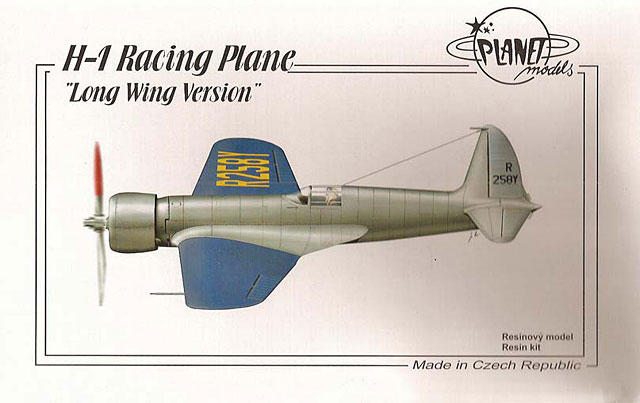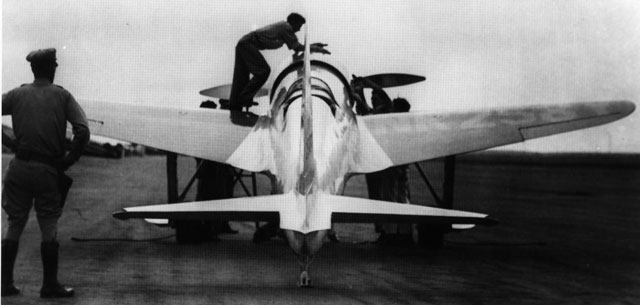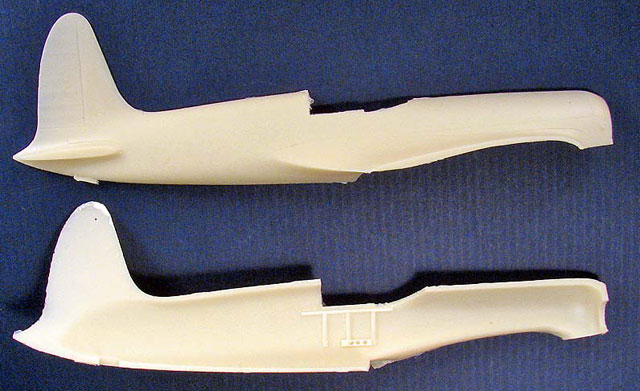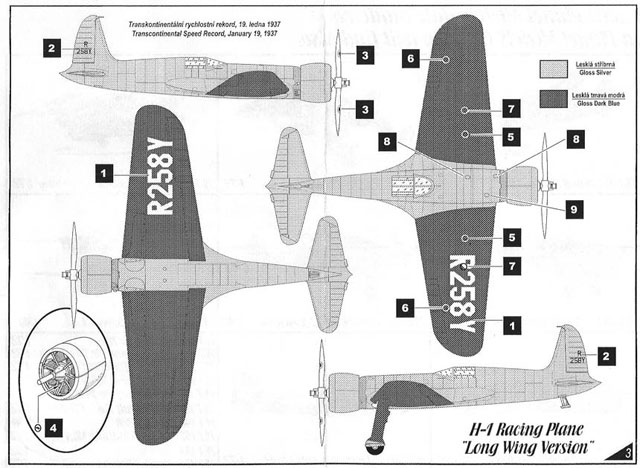|
H-1 Racing Plane
“Long Wing Version”
(The Hughes Racer)

Planet Models, 1/48
S
u m m a r y
|
| Catalogue Number: |
168 - H-1
Racing Plane “Long Wing Version” (The Hughes Racer) |
| Scale: |
1/48 |
| Contents and Media: |
40 pieces in
cream colored resin and 2 clear vac-form canopies. Instructions,
painting guide and decal sheet for 1 aircraft. |
| Price: |
Around USD $54.00 |
| Review Type: |
FirstLook - In Box |
| Advantages: |
Finely
engraved panel lines, single piece cowling without pour stub, and
seemingly excellent fit. |
| Disadvantages: |
Delicate
parts in resin. Requires use of cyanoacrylic (super / crazy) glue and
/or two-part epoxy. |
| Recommendation: |
Highly recommended for modelers who
have experience with resin kits and parts. |
Reviewed by Steven "Modeldad" Eisenman

HyperScale is proudly supported by Squadron
Okay, tell the truth. You saw the movie the
“Aviator” and you were mesmerized by the scenes in which Howard Hughes
set the land plane speed record in that sleek racing plane, only to see
it belly land in a beet field. I even bet you said to yourself, “self,
I’d love a model of that aircraft”. Am I correct?

Well the model has arrived, but not that specific
aircraft. The aircraft, which was represented in the movie, was the
low-aspect ratio short wing version of the Hughes, and which Planet
Models is to issue in the future.
The model under review is the same aircraft, the
H-1 (also known as the 1B), but with the longer moderate-aspect ratio
wings attached and with retractable undercarriage. This aircraft set
the transcontinental speed record on January 19, 1937. Hughes flew the
H-1 non-stop from Los Angeles to Newark Airport, a distance of
approximately 2,490 miles, at an average speed of 332 mph.
This is one beautiful little kit. It is also
appears to be a great kit for a first time experience with resin
models. The instructions are merely one page. I test fitted (without
cleaning up the parts) the wings to the fuselage and it is an excellent
fit that appears to require no fillers. For those have struggled over
many an MPM plastic kit, there would seem to be no struggling what so
ever with this resin kit.

Click
the thumbnails below to view larger images:
I did note that the fuselage is not perfectly
straight. When the two halves are held together at the fin, there is a
bit of space between the halves at the forward end. This can be
resolved by slight warming of the parts to straighten them, or gluing
the rear first, then holding the front portion together while the glue
sets.
The Hughes H-1 was a paragon of sleekness at
that time; flush riveted aluminum fuselage with seams as tight as can
be. The wings were plywood with counter-sunk screws. The model
reflects this sleekness. At first look, you cannot even see the panel
lines on the fuselage, but look closely under a light; they are there,
as delicate as I have ever seen on a resin model. The wing, which is of
one piece, is smooth, with fine detail. The long wing on the H-1 was 31
feet 9. I measure the kit’s wing at 32 feet.
The cowling is finely molded without a pour stub.
The edge of the front opening was a bit rough and will require a small
amount of careful sanding to make the edge smooth and even: a small
price to pay for not having to deal with a stub.
Markings
The Hughes H-1 originally bore the serial number
NR258Y in deep yellow on dark blue wings. Later it was changed to
NX258Y. The aircraft was given to the National Air and Space Museum and
it currently has the serial R258Y.

Click
the thumbnails below to view larger images:
The kit contains the markings for the aircraft as
presently displayed at the NASM. I tried to determine why the serial
was again changed, but was unable to find an answer.
I must admit that as soon as I took the parts out
of the box and began fitting them together, I fell in love with this
little gem. The only thing better than owning this kit would be to own
the flying reproduction of the Hughes H-1. I highly recommend this kit.
Thanks also to
Dana Bell.
I do not know the
source of the picture, so I cannot give credit.
Thanks to MPM / Planet Models for the review sample.
MPM
and Planet Model
kits are available worldwide through hobby retailers
worldwide
and at
Squadron.com
Review and Images Copyright © 2006 by
Steven Eisenman
Page Created 25 April, 2006
Last updated 25 April, 2006
Back to HyperScale Main Page
Back to Reviews Page
|
Home | What's
New | Features
| Gallery |
Reviews | Reference
| Forum
| Search